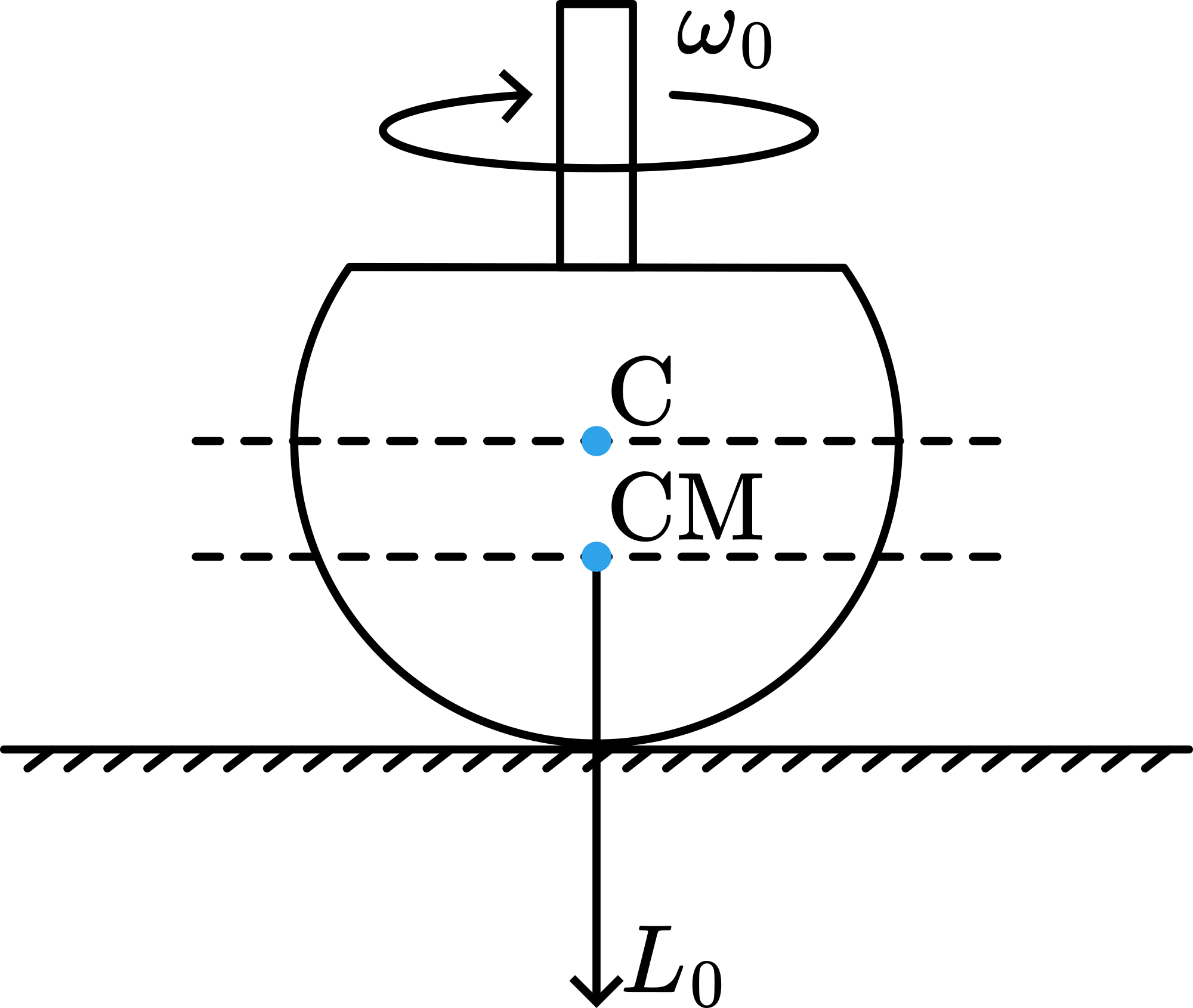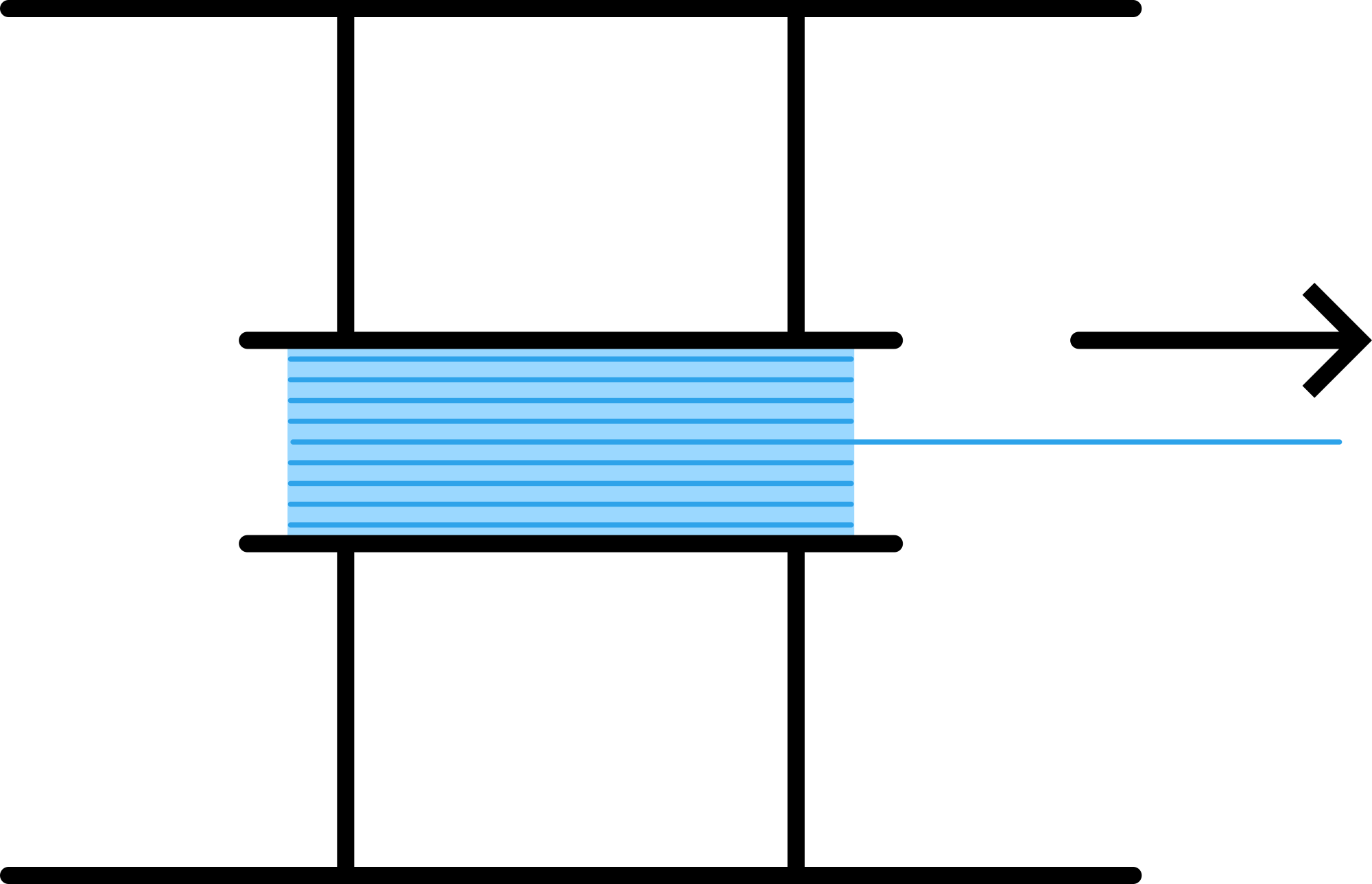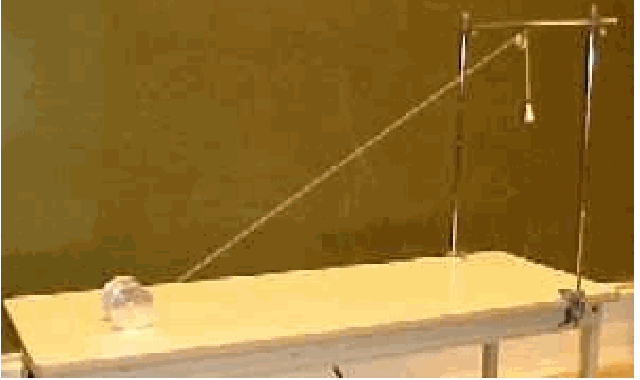14 Pulling a Spool (a.k.a. Oma’s Garenklosje)#
Aim#
Direction of rolling is determined by direction of torque.
Subjects#
1K10 (Dynamic Torque)
Diagram#

Fig. 234 .#
Equipment#
A (large) spool of thread.
A thread or ribbon wound on the spool.
Pulley.
Mass, \(m=.1 \mathrm{~kg}\).
Presentation#
Show the simple construction of spool and wound thread to the students. The demonstrator takes the end of the thread in his hands and wants to pull in a horizontal direction. Ask the students in which direction the spool will roll. After their answers, pull …. and the spool will roll into the same direction as the demonstrator pulls.
The thread is wound to the spool again. The demonstrator takes the end of the thread in his hands and wants to pull in an upward vertical direction. Again he poses the same question. After the students’ answers he pulls …. and the spool rolls into the other direction.
These two demonstrations induce the idea that it should be possible to pull in such a direction that the spool will not roll at all! Ask the students in which direction you need to pull the thread to get this situation. After their answers, experimentally search the right angle: the spool skids.
Explanation#
The direction in which the spool rolls is determined by the direction of the torque on the spool about the contact point. The critical angle is defined by extending the line of the pulled thread so that this line passes through the point of contact between the spool and the table. A force directed along this line produces zero torque on the spool about the contact point. (see Figure 235)

Fig. 235 .#
Remarks#
When pulling at very shallow angles, the spool orientation is not stable unless the thread comes off the spool at its center. This can be prevented by using a ribbon rather than a thread or using a large spool that is made in such a way that the thread can only be rolled in the centre of the spool (Figure 236).

Fig. 236 .#
A nice extension of this demonstration is to set the system up so that the string passes over a pulley and the force is supplied by hanging a weight from the end of the string (Figure 237).

Fig. 237 .#
If the spool is moved away from its critical angle, the spool will always roll back to the position of the critical angle! It will oscillate back and forth around this equilibrium position.
Video Rhett Allain#
Sources#
Ehrlich, R., Why Toast Lands Jelly-Side Down: Zen and the Art of Physics Demonstrations, pag. 65
Jewett Jr., John W., Physics Begins With Another M… : Mysteries, Magic, Myth, and Modern Physics, pag. 115
Mansfield, M and O’Sullivan, C., Understanding physics, pag. 102
Young, H.D. and Freeman, R.A., University Physics, pag. 324(10-53)
